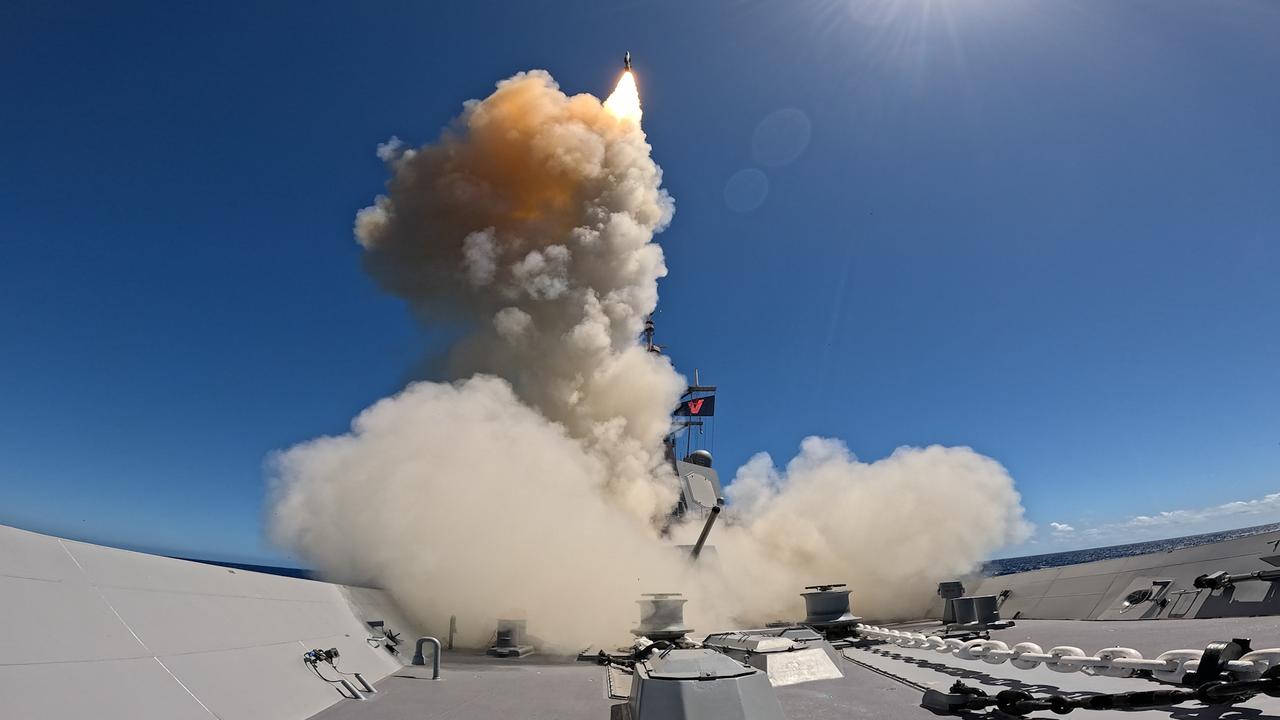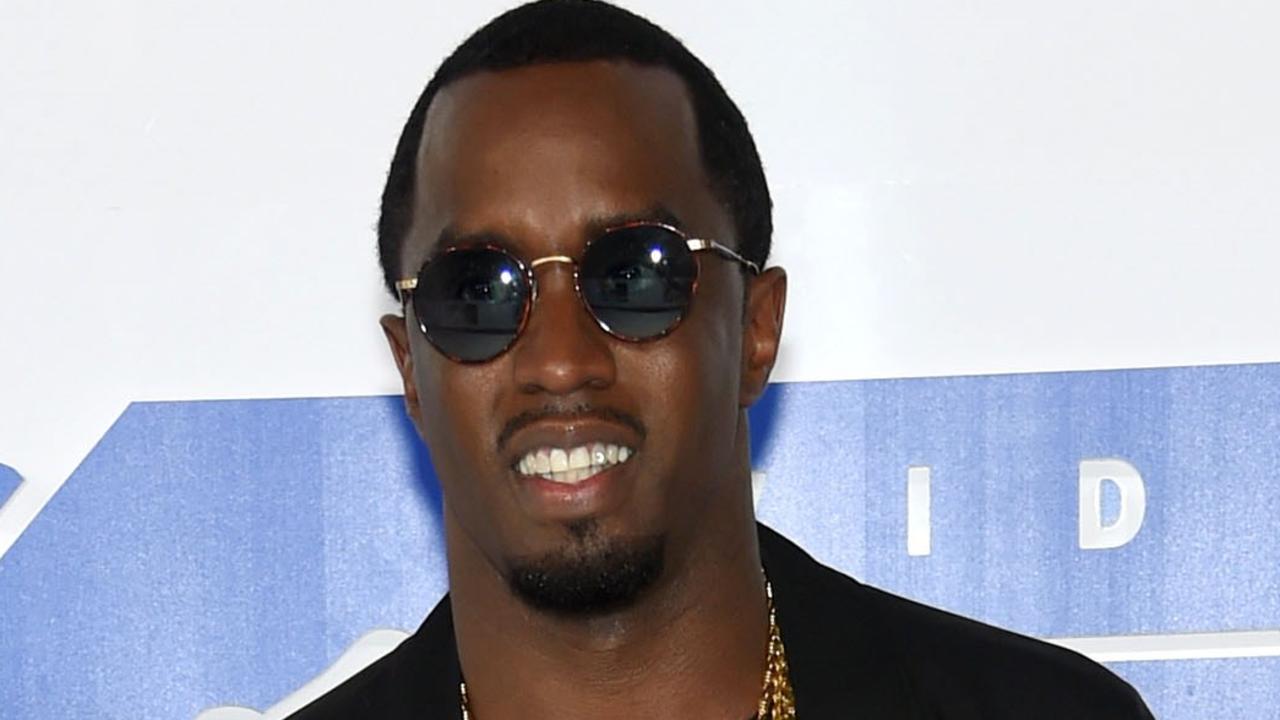Heartbreaking video of young girl in Gaza emerges, as UN accuses Israel of blocking humanitarian aid
A young girl, no older than ten, trudges barefoot down the side of the road, her sister slung over her shoulder. Then a shocked passerby stops her.
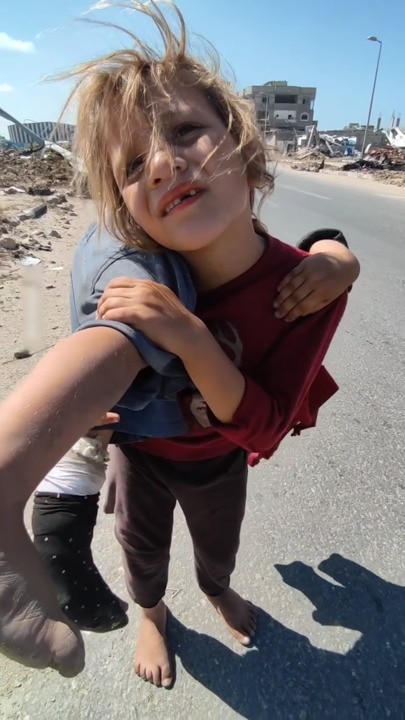
World
Don't miss out on the headlines from World. Followed categories will be added to My News.
Heartwrenching footage from the Gaza Strip shows an exhausted young girl carrying her even younger, injured sister in the baking heat to get her medical treatment.
The two children were encountered by a Palestinian journalist, Alaa Hamouda, on Monday, local time.
Mr Hamouda’s footage begins with the older girl, who appears to be about eight, trudging towards him, barefoot, on the side of a road. Her sister, who looks about five, is slung over her shoulder, with a cast on her left leg.
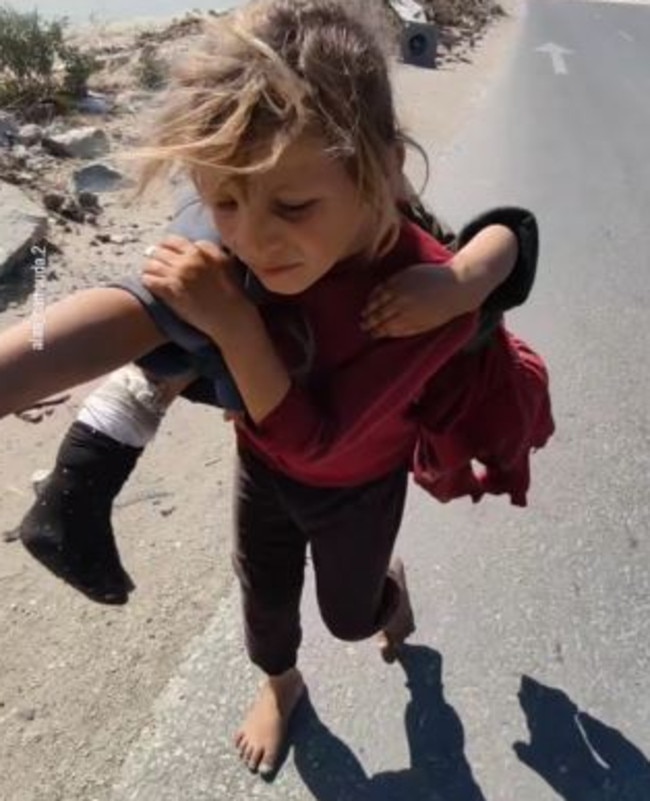
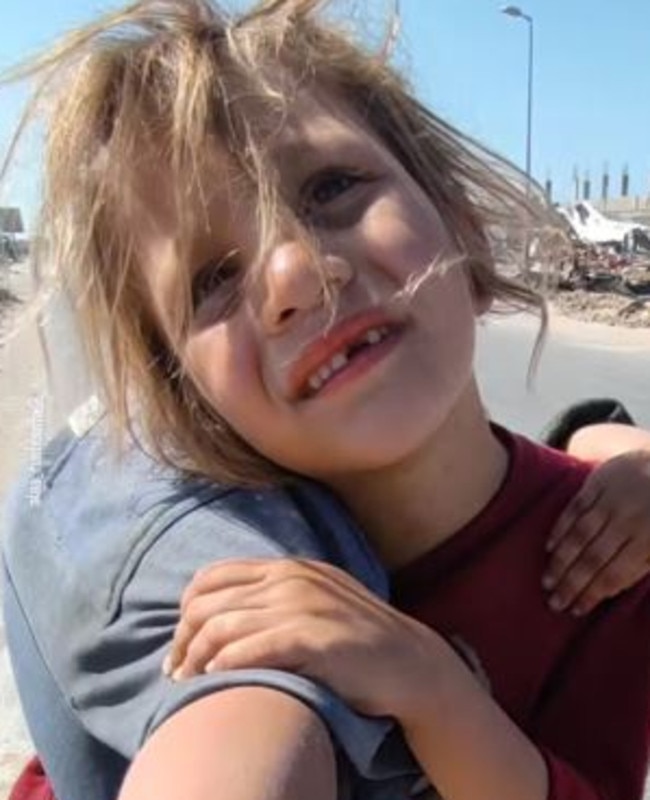
“How are you? May God keep you safe. Why are you carrying your sibling?” Mr Hamouda asks the older girl.
“She was hit by a car,” she responds.
“OK. Where are you taking her?” Mr Hamouda asks.
“I’m taking her to get treated,” she says.
Asked whether she is tired from carrying her sister, she nods.
“I am tired. I’ve been carrying her for an hour,” says the girl.
Quizzed further, she tells the journalist she is heading to the al-Bureij camp, one of the smaller displacement areas in central Gaza.
Mr Hamouda offers to take the children there, and she carries her sister to his car.

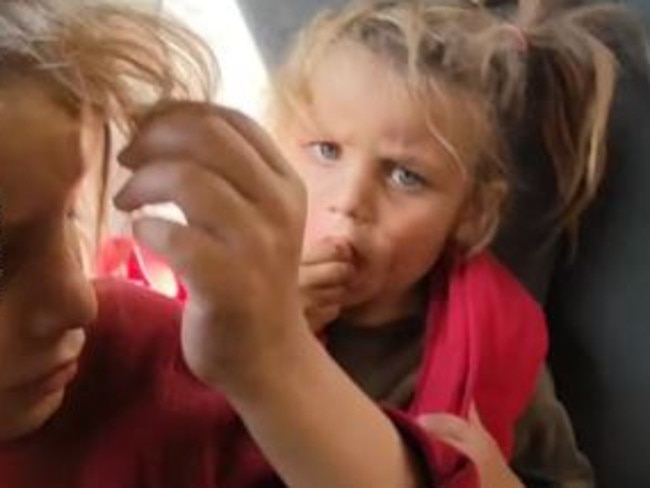

Upon their arrival at the al-Bureij camp, she once again picks up the younger girl and walks away silently.
“A displaced girl carrying her injured sister on her shoulders and walking with her for more than two kilometres,” Mr Hamouda wrote in his description of the video.
“I saw her by chance and felt sorry for her condition as she walked alone, barefoot, under the scorching sun. I helped her and took her to her displacement site.”
Almost all of Gaza’s population displaced
Approximately two million people living in the Gaza Strip – about 90 per cent of its population – have been displaced from their homes since Israel began its retaliatory war against Hamas a year ago.
That’s in addition to the death toll, which currently stands at about 42,000, according to the Hamas-run health ministry, with a further 100,000 injured. The ministry claims most of those victims are women and kids.
The displaced population, which includes tens of thousands of children, faces immense challenges, including severe shortages of food, medicine and clean water.
Gaza’s displacement camps, already overcrowded, have also been frequent targets of Israeli strikes, as have schools, many of which are being used as makeshift shelters for families.
The IDF stresses that its operations target Hamas militants. Nevertheless, the threat of violence is ever-present, even in areas identified as safe.
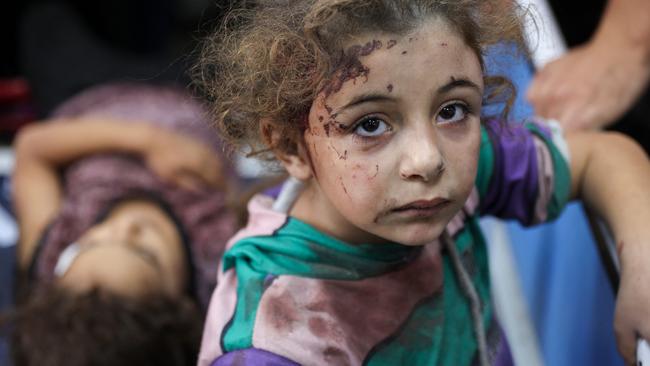


Many of the displaced children have lost parents, siblings or other family members.
All the way back in February, relatively early in the war, UNICEF estimated that “at least 17,000” children were already unaccompanied or separated.
“In the middle of a conflict, it is common for extended families to take care of children who have lost their parents,” a representative for the agency, Jonathan Crickx, said at the time.
“But currently, due to the sheer lack of food, water or shelter, extended families are distressed, and face challenges to immediately take care of another child as they themselves struggle to cater for their own children and family.”
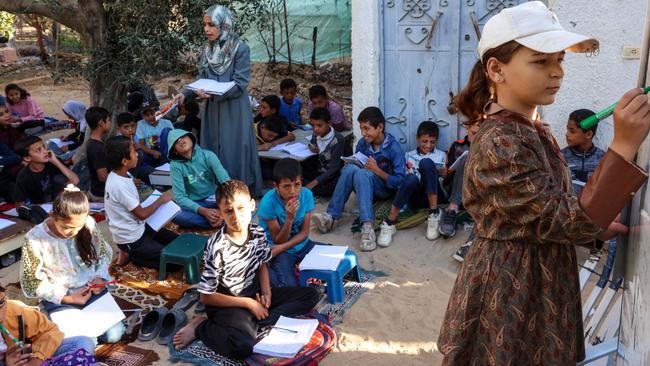
Mr Crickx stressed that children were suffering terrible trauma.
“Children’s mental health is severely impacted. They present symptoms like extremely high levels of persistent anxiety, loss of appetite, they can’t sleep, they have emotional outbursts, or panic every time they hear the bombings,” he said.
“These children don’t have anything to do with this conflict. Yet they are suffering like no child should ever suffer.
“Not a single child, whatever the religion, the nationality, the language, the race, no child should ever be exposed to the level of violence seen on the 7th of October, or to the level of violence that we have witnessed since then.”
The Gaza Strip’s population is unusually young; almost half of its residents are under 18.
Israel accused of blocking ‘critical’ aid
Philippe Lazzarini, head of the United Nations agency responsible for helping Palestinian refugees, today accused Israel once again of preventing humanitarian aid from reaching parts of northern Gaza.
He said that was denying civilians “critical supplies”, including medicine and food.
“Hospitals have been hit and are left without power, while injured people are left without care,” Mr Lazzarini said.
“According to reports, people attempting to flee are getting killed, their bodies left on the street. Missions to rescue people from under the rubble are also being denied.
“Denying and weaponising humanitarian assistance to achieve military purposes is a sign of how low the moral compass is. Assistance must reach everyone in need in Gaza.”
Included in that group are the remaining Israeli hostages, still being held by Hamas.
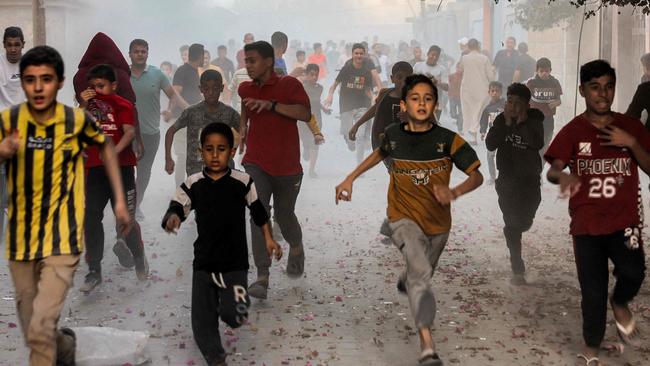
Israel has not commented directly on Mr Lazzarini’s latest statement, but last week it rejected a similar accusation. The country’s ambassador to the United Nations, Danny Danon, told the body’s Security Council Gaza was being “flooded” with “as much aid as possible”.
He echoed previous claims from the Israeli government that Hamas militants steal and then sell aid intended for civilians.
But international pressure to increase the amount of aid allowed into the Strip is building.
Earlier this month, the US government sent a strongly worded letter to senior Israeli officials, including Defence Minister Yoav Gallant.
The letter, issued jointly by US Secretary of State Antony Blinken and Defence Secretary Lloyd Austin, said the level of aid allowed into Gaza had dropped by more than 50 per cent since May, with September “the lowest of any month during the past year”.
Mr Blinken and General Austin, who accused Israel of impeding or straight up denying 90 per cent of humanitarian movements in the Strip, and of imposing new, unreasonable requirements on aid trucks.
The United States pushed for “urgent and sustained actions by your government this month to reverse this trajectory”, implying America’s significant military aid to Israel may otherwise be in jeopardy.
Originally published as Heartbreaking video of young girl in Gaza emerges, as UN accuses Israel of blocking humanitarian aid




